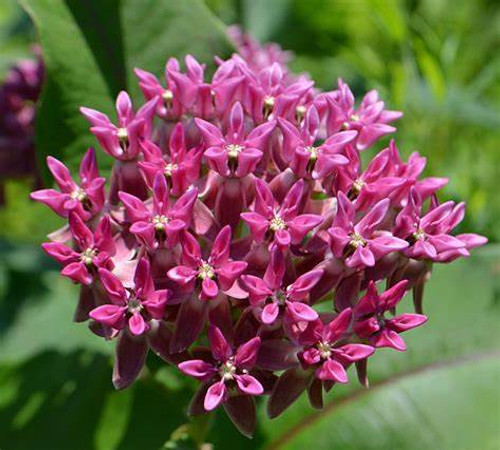Milkweed
Milkweed (genus Asclepias) functions beyond a simple wildflower because it delivers major ecological benefits along with medicinal properties and decorative appeal. Milkweed originates from North America and has traditionally been valued as a vital support system for wildlife, particularly pollinators. Avid gardeners, conservationists, and nature supporters should consider adding milkweed to their garden or landscape.
Ecological Importance
Milkweed plays an essential part in the monarch butterfly (Danaus plexippus) life cycle, which makes it one of the plant's most recognized benefits. Monarch caterpillars feed exclusively on milkweed leaves. The absence of milkweed prevents monarch reproduction, which establishes the plant as vital to its existence. The decline of monarch populations caused by habitat loss and pesticide usage has made planting milkweed a primary method for people to support conservation work.
Various pollinating insects find support from milkweed plants. The plant attracts bees, butterflies and hummingbirds because its colorful flower clusters bloom in summer releasing nectar. The cultivation of milkweed by gardeners generates welcoming environments for critical insect and bird species, which help maintain biodiversity.
Medicinal and Traditional Uses
Native American tribes and early settlers discovered multiple medicinal and practical applications for milkweed throughout history. The plant served as a treatment option for medical problems such as warts, coughing, and breathing difficulties. The plant's latex-like sap is toxic in high amounts but served medicinal purposes when prepared in small doses.
Milkweed fibers served multiple purposes beyond medicine as they were processed into rope and textiles and used as insulation material. Life jackets during World War II utilized milkweed floss as a kapok substitute due to its ability to float.
Easy to Grow and Maintain
Milkweed requires minimal maintenance and demonstrates exceptional hardiness, making it an excellent choice for both home gardens and landscaping projects. This plant will grow successfully in different soils and develops drought resistance after establishment. While full sun and well-drained soil suit most milkweed species well, they can also survive in partial shade with moist conditions.
Gardeners love Asclepias tuberosa (butterfly weed) and Asclepias incarnata (swamp milkweed) because of their vibrant orange, pink, or purple blossoms, which attract pollinators. These plant varieties demonstrate non-invasive characteristics and originate from multiple regions, which makes them suitable ecological selections.
Why You Should Buy Milkweed
When you purchase and plant milkweed, you engage in an easy yet significant action that benefits local ecosystems while safeguarding the monarch butterfly. The plant provides garden beauty through its bright flowers and vertical growth while needing minimal maintenance after establishment.






